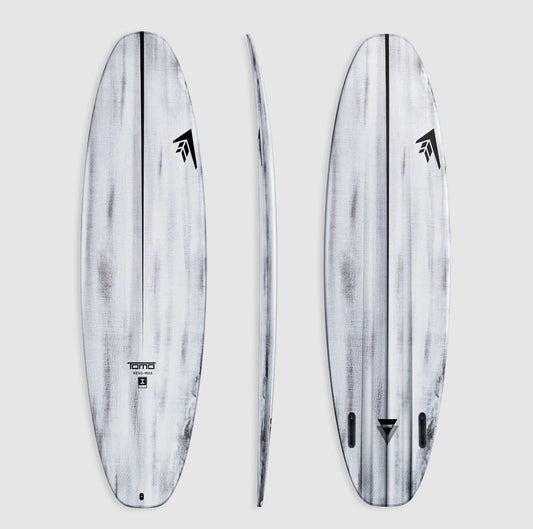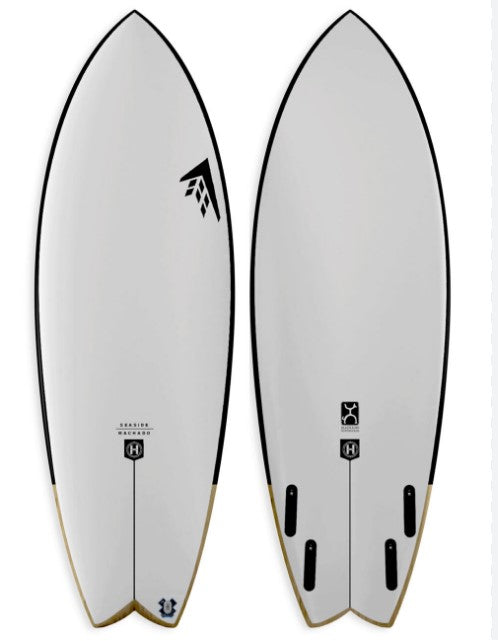Surfing wetsuits are essential for keeping surfers warm in cold water by trapping a thin layer of water between the suit and the body, which then warms up and provides insulation. The effectiveness of a wetsuit depends on its design and construction, including the type of seams and the materials used. Seams play a crucial role in preventing water from continuously entering the wetsuit and compromising its insulating properties. There are several types of wetsuit seams, each with its own advantages and limitations. Here's a detailed description of the most common types:
-
Flatlock Stitch:
- Description: A type of overlock stitching, flatlock seams have neoprene panels that lie flat against each other. However, the stitching is flat, creating a flush, smooth seam on both the inside and outside of the wetsuit.
- Advantages: Flatlock seams can be quite durable and they also keep the price of a wetsuit down. They are commonly used in wetsuits designed for moderate water temperatures where a complete seal is not crucial and water entry does not cause big drops in body temperatures.
- Limitations: Like overlock seams, flatlock seams are not fully sealed, allowing water to enter the suit. They are not suitable for very cold conditions. We do not sell 4/3mm winter wetsuits that are flatlocked, it would defeat the purpose. Click here to see our range of mens steamers both sealed and unsealed.

-
Sealed or GBS (Glued and Blind Stitched):
- Description: GBS seams involve gluing the neoprene panels together and then stitching through only one side of the material, creating a watertight and durable seam. The stitching does not penetrate the entire neoprene thickness, reducing water entry.
- Advantages: GBS seams provide better insulation and are more effective at preventing water from entering the wetsuit compared to overlock and flatlock seams. They are also more flexible than flatlocked suits allowing more freedom of movement and more comfort. They are commonly found in mid-range to high-end wetsuits.
- Limitations: While GBS seams are effective, they are not completely waterproof. Some water may still seep through the stitching, which is fine as the small amount of water will warm between the rubber and the body, this will gradually increase over the lifetime of the suit and with wear as you initially get pin prick areas of the glue breaking down. The better you look after your wetsuit (see our Wetsuit Care Guide) the longer you will maintain the integrity of these seams.
-
Taped Seams:
- Description: Taped seams involve applying an external tape over the stitched or glued seams, creating an additional barrier against water entry. Most taped suits have the tape on the inside of the suit which also improves comfort. Taped seams can be combined with overlock, flatlock, or more typically, GBS construction.
- Advantages: Taped seams enhance the waterproofing of the wetsuit and increase the durability of GBS seams, making them suitable for colder water temperatures. They add durability to the seams and prevent fraying.
- Limitations: Taped seams can add a bit of stiffness to the wetsuit, potentially affecting flexibility. However, advancements in technology have led to more flexible tape materials where the difference is becoming negligible. Taping can add a small amount of weight to a suit compared with GBS seams but this is also improving as materials advance.
-
Liquid Seams:
- Description: Liquid seams involve the application of a liquid rubber or sealant over the stitched seams. This creates a flexible and waterproof barrier, preventing water from entering the wetsuit.
- Advantages: Liquid seams provide excellent water resistance and flexibility. They are often used in high-end wetsuits designed for cold water conditions.
- Limitations: Liquid seams may require more care to prevent damage, and they can be more expensive. They can also add some weight to the wetsuit. Over time, the liquid sealant may wear off with use. In the past some brands had problems with liquid seams but materials have improved a lot and this is not seen so commonly now.

4: Welded Seams:
Description: Welded seams are created by using heat to fuse the neoprene panels together, eliminating the need for stitching. This creates a seamless and watertight connection.
-
- Advantages: Welded seams are extremely effective at preventing water entry, as there are no needle holes from stitching. They provide excellent flexibility and are often used in premium wetsuits.
- Limitations: Welded seams can be more expensive to produce, and the lack of stitching may affect the overall durability of the wetsuit. Additionally, repairing welded seams can be challenging.

In summary, the choice of wetsuit seam construction depends on the intended use, water temperature, and personal preferences of the surfer. Flatlock seams are suitable for warm water conditions, while GBS, taped, liquid, and welded seams provide better insulation for colder waters and generally increased integrity of the seams. The advancements in wetsuit technology continue to bring innovations that enhance the performance and comfort of surfers in various conditions.



